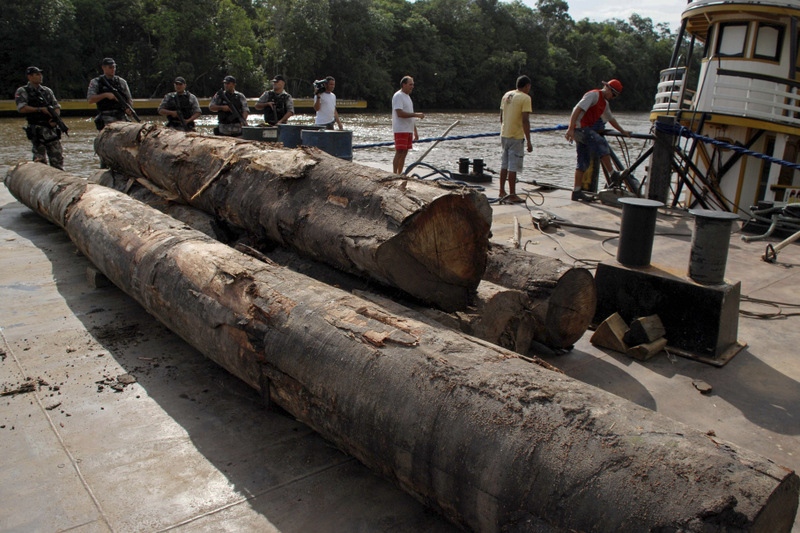A new report spells out in grisly detail the price some environmentalists pay for their work.
At least 908 environmental activists have been killed in the last decade, according to the London-based NGO, Global Witness.
It’s the first such survey of its kind.
The death toll in the 35 countries analyzed is likely even higher since field investigations in some countries are difficult or impossible to perform.
“Many of those facing threats are ordinary people opposing land grabs, mining operations and the industrial timber trade, often forced from their homes and severely threatened by environmental devestation,” the report said.
As Earth Day nears, GlobalPost takes a look at the six deadliest countries for environmentalists, according to fatalities reported between 2002 and 2013:
1. Brazil (448 deaths)

Clashes between agribusiness and the Guarani and Kuranji people over logging on indigenous homelands accounted for half of Brazil’s environmental activist killings in 2012, according to the report.
Conflict over land and forest rights is the main driver of such deaths in Brazil, where the deforestation rate jumped by 28 percent in 2013 despite recent successes to curb logging in the Amazon.
2. Honduras (109 deaths)
In Honduras, 93 peasant farmers in the Bajo Aguan region have been murdered since 2010 during conflicts with companies that want to expand African palm plantations for use in biofuels and carbon trading.
Witnesses have implicated Honduran special forces and the country’s 15th Battalion in human rights violations around the plantations, but the military blames the United Peasant Movement for escalating violence.
3. Philippines (67 deaths)

Mining is the main driver of conflicts in the Philippines.
Most notably, Philippine soldiers shot and killed anti-mining activist Juvy Capion, her two sons and a 15-year-old boy who had been blocking the entrance of a gold and copper mine owned by Sagitarrius Mining Inc. in Mindanao in 2012.
Capion and her husband Daguil had declared a “tribal war” against the project. The military called it a legitimate operation.
4. Peru (58 deaths)
Copper, iron ore and silver mining is also the source of environmental conflicts in Peru, where business is booming amid increased production.
The worst single incident happened in June 2009, when 33 were killed during protests in the northern providence of Bagua on World Environment Day. The protests were sparked by two legislative decrees — both later rescinded — that would have opened up a large area of the Amazon to mining, hydropower and oil and gas devleopment.
5. Colombia (52 deaths)
Current issues in Colombia include deforestation in the Amazon and Choco region, soil and water pollution stemming from chemicals used in the coca-refining process, coral bleaching and land erosion.
Cattle ranching and the projected expansion of palm oil and rice operations have emerged as threats to the Orinoco Basin, according to the World Wildlife Fund.
6. Mexico (40)
The number of monarch butterflies wintering in Mexico dropped this year to its lowest level since 1993 due to a dropoff in food and habitat.
The milkweed the species feeds on is being displaced by genetically-modified crops and urban sprawl in the United States, while illegal logging continues to cut into the trees they use for homes in Mexico.
The country is also plagued by significant chemical pollution from factories dumping industrial waste.
This article first appeared on Global Post.

